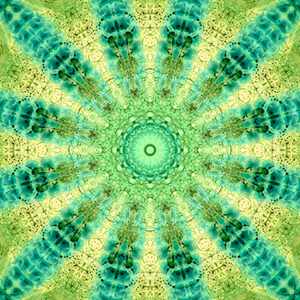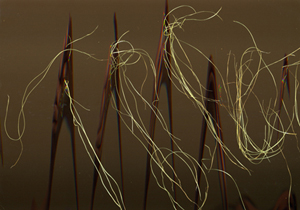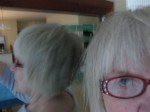Romancing the seed?
Seed Cycles: Works by Sally Kuzma
Villa Terrace Decorative Arts Museum
2220 N. Terrace Avenue
January 23 – April 6, 2008
Artist’s Talk: Sunday, February 24, 2 p.m.
One would guess that the majority of visitors to the Royal Botanic Gardens, in Kew (near London), likely have little scientific interest in The Millennium Seed Bank Project (MSBP), entrenched on 300 acres. The venerable Botanic Gardens are no doubt gardens of earthly delights, but the Seed Bank Project is decidedly unromantic, in that its vision is to conserve seeds from the world’s wild plant species by the end of the decade. So far they’ve banked 10% of the rarest, “most threatened and most useful species known to man.” They are also scanning their massive herb collection with something called the HerbCat.
As I write, I can’t help but thinking of photographer Tom Bamberger’s magnificent works which opened the gallery in the Inova/Kenilworth building, most particularly “Spring Corn,” a bleached-out, drained-of-emotion digitally altered photograph. As a former Iowan, I initially ogled the work through nostalgic eyes, even though the stark image was taken near Mequon. Coldly elegant and impersonal, the result was uncontrived, and it’s my guess that it took some doing to make it so.
Frankly, I often need to remind myself that “nature is uncaring.” Of course Homo sapiens has forever altered the natural world, and artists of that species also alter it to fit their personal needs (and the demands of curators and text-panel writers), but beyond that, I think the “relationship” slant is a big ball of nothing.
When I visit the Milwaukee Art Museum and stand before a painting by the 19th-century American landscape painter Thomas Moran (who is also represented in the collection of the Charles Allis Museum, a partner of Villa Terrace), I know I’m in a romantic space with romantic paintings, but what do they really reveal about the relationship between people and the natural world? To drive the point home, go online and take a look at New Orleans After The Flood, a series of photographs by Robert Polidori, stunning images about the Big Easy right after Katrina. Does nature give a hoot about “relationships?” I don’t think so.

Kuzma somewhat clarified the relationship boondoggle in an email:
“I don’t know if I’d claim to investigate the relationship people have with the natural world. The scanner and the computer are just a way to get a closer look at them. Like a scientist, I’m curious about what I see, and want to see more. Some of the color palette shifts I use are not unlike the stains and dyes used in microscopic work to reveal certain structures and relationships. I also feel a kinship with experimenters in early camera-less photography, people like Talbot and Anna Atkins, whose photograms, cyanotypes and botanographs gave us another way to look at and record natural phenomena.”
With a Master of Fine Arts, she’s been occupied as an artist, designer and teacher for two decades, and her approach produces decorative results which fit with the Villa Terrace vision. Laurel Turner, CAVT’s curator of exhibitions and collections, pointed out that the criteria for Villa exhibitions is focused on the decorative, the botanical and the architectural. She also remarked that there is an ongoing discussion among artists as to the validity of scanning and altering images. I’ve heard this argument from photographers who think anything other than a purist approach is “cheating,” with the flip-side argument that art-making via technology is here to stay.
Through her work, Kuzma says poses some “very basic and concrete questions: through what lens do I view the world, and how does it frame or distort what I see? In what ways can it reveal new data? … This is not a didactic exhibit. If there’s a take-home point, it would be that our tools shape what we see, and can be used in positive or negative ways, not always with the results we intend.”
True, but this leaves me in the dust. If an artist has an intention (a clear intention), then wouldn’t it benefit the artist to weed out the unintended and give the viewer a clear shot at what’s going on?
Of all of the works in the second floor hallway, and in the Master Bedroom, Kuzma’s “Corn in Four Parts: Tassel, Husk, Silk, Ear, 2006” is the most successful. Of these four parts, “Silk,” an airy depiction of corn silk floating languidly in muted space, is outstanding. Less successful are her “kaleidoscopic” images, which smack of scanner overkill. The craftsmanship in all of the pieces is first class and the enhanced palette in many is adventuresome, though several come dangerously near to depicting framed samples of wallpaper that would look chic with oriental rugs and elaborate furnishings.

In the end, when all is said, it’s difficult to dump emotional baggage, and my eye often rejects the overblown. The hi-tech depictions of prairie seeds, garlic seeds, lilies, mushrooms and sunflowers, no matter how well executed, no matter how large, kaleidoscopic, or laden with color, left me feeling like Dorothy skipping through the Land of Oz without a reliable compass. Less is more. This extends beyond the content of the art and into the curatorial arena. Two dozen pieces, carefully selected, would have suited me fine.
At 2 p.m., on Sunday, February 24, at Villa Terrace, Ms. Kuzma will discuss her work. Leave your biases behind and your decorating instincts at home. The artist is curious about how this exhibition will be received in Milwaukee, a very different place than Iowa, where her project began. For more information call 414-271-5636 or visit the Museum’s website.





















